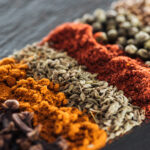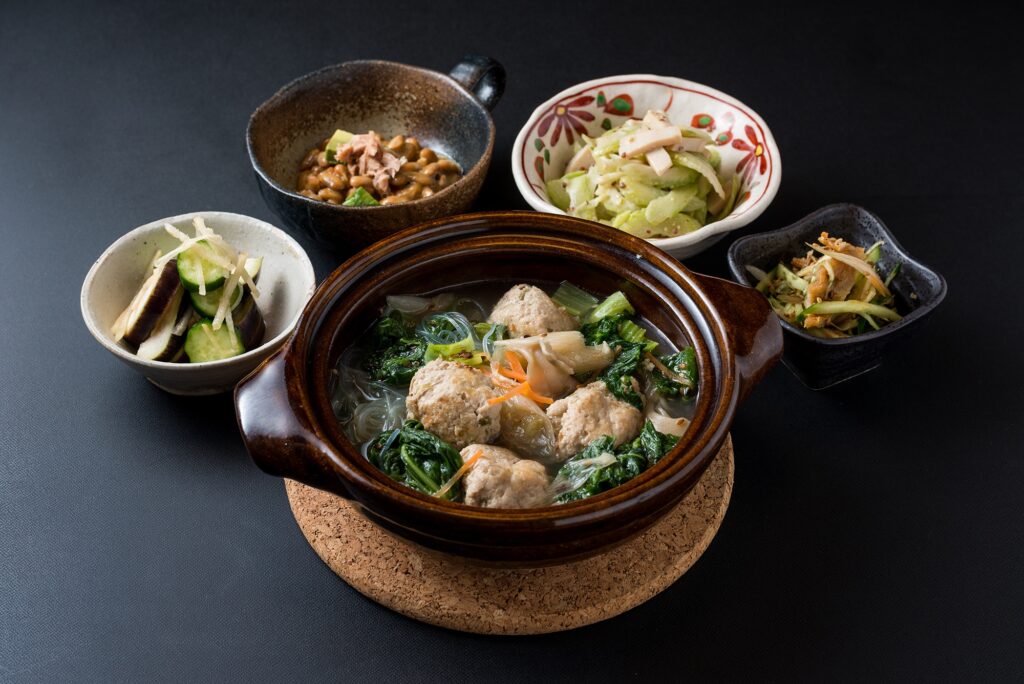
Did you know that sushi was invented in the eighth century as a way to preserve food?
Japanese cuisine has a rich and fascinating history. The problem is that it can be overwhelming to make sense of Japanese dishes if you are not yet familiar with them.
This is why it is important to know about the best foods to try when you are visiting the country. We’ve written a guide to help you out. Keep reading to find out more.
The Basics of Traditional Japanese Food
Traditional Japanese food, known within Japan as washoku, is about balance and having fresh ingredients. People eat different kinds of dishes every season.
Rice is an essential part of every Japanese meal. It is also common for people to eat soba, udon, and noodles.
Expect to be served a side dish along with every main dish that you order, such as tsukemon (preserved vegetables) or miso soup.
Interestingly, Japanese people began to consume less meat once Buddhism became the dominant religion during the Kofun period. People also began to use fewer spices. The main protein source became fish and seafood.
People started eating sushi in the 9th century. But the ancient form of sushi is much different than the sushi of today.
People of the past prepared sushi in order to preserve raw fish once they realized that it was possible to do this by fermenting it in cooked rice.
It was not until the late eighteen hundreds that Japanese people started eating meat again. This is also when many popular Japanese meat dishes such as wagyu, and yakiniku were invented
1. Sushi
Sushi is undoubtedly the most popular dish in Japan, and it is the first thing that most visitors want to eat when they arrive to the country. People who love sushi treat it more as an art form than as a type of food.
In the most general sense, sushi is a type of artfully prepared dish that is made with sushi rice and various locally sourced ingredients. People usually prepare it with some kind of raw fish.
This includes maguro (tuna), shake (salmon), hamachi (yellowtail tuna), and unagi (freshwater eel).
People will serve sushi with soy sauce, wasabi, and pickled ginger.
The original type of sushi that people ate in the 9th century was called narezushi. It’s still possible to find the dish in Japan if you know where to look.
The most common types of sushi are nigiri sushi, chirashizushi, and inari sushi. Nigiri sushi consists of rounded balls of rice that are topped with a small slice of fish. People often refer to maki sushi as sushi rolls.
2. Sashimi
Sashimi is a type of fish or seafood that is thinly sliced. It also might refer to other kinds of raw meat, such as beef or chicken.
Sashimi is similar to sushi, except sashimi does not have fermented rice.
Consider trying sea urchin sashimi if you’ve never tried sashimi before. It is easy to find this dish at most Japanese seafood markets.
3. Obanzai
This is a traditional food from Kyoto. It mainly consists of vegetables that are in season, tofu, and pickles.
There are lots of different ways to prepare obanzai. One of Kyoto’s most famous obanzai restaurants is called Menami. It is located in downtown Kyoto.
4. Ramen
Raman is a kind of noodle soup. It consists of four essential components: broth, seasoning, wheat noodles, and toppings.
Ramen is also served with tare, which is a salty concentration that chefs will put on the bottom of every bowl of ramen.
There are four main types of tare: shoyu, miso, shio, and tonkotsu.
Most people who try ramen for the first time notice the seasoned broth.
It is easy to feel overwhelmed when you are ordering a bowl of ramen for the first time. Even though there are only four main types, each of them has lots of possible variations.
5. Tempura
This is a traditional cooking method in Japan. It involves deep-frying vegetables or fish coated in a batter that consists of water and flour.
You only need to deep fry tempura for a couple of seconds. If you order it in a restaurant, your waiter or waitress will serve it with slices daikon radish and a sauce for dipping.
It is also common for people to sprinkle tempura with powdered green tea or salt.
6. Gyu-Nabe
When Japanese people started eating beef in the late eighteen hundred after it had been banned for several hundred years, there were not very many recipes available.
This is why a man named Otokichi Takahashi started a restaurant in the late nineteenth century that featured a delicious meat dish known as gyu-nabe.
Gyu-nabe is often served in a hot bowl and consists of sliced beef, broth, vegetables, and shiitake mushrooms.
This is a must-try dish if you are visiting Yokahama.
7. Unagi
Unagi is a kind of freshwater eel. To prepare this dish, you need to cut an eel open and remove its head and bones. You’ll then need to place the meat on skewers so that you can broil it and grill it over charcoal.
Restaurants will serve unagi on a bed of rice. It is also common for it to be basted with a kind of sweet soy sauce.
8. Kushiyaki
Kushiyaki refers to grilled meat that is cooked on skewers. It’s typical for pubs and small informal restaurants to serve this dish. It is one of Japan’s most common bar foods.
In most cases, people use chicken to prepare kushiyaki. But it is possible to prepare it with other kinds of meat.
9. Takoyaki
This is one of the most popular foods in Osaka. It is a snack that consists of chopped octopus, tempura scraps, pickled ginger, and green onions which are coated with a wheat flour batter.
Don’t miss out on the opportunity of trying this delicious dish if you are visiting Osaka.
10. Okonomiyaki
This is a type of pancake that is made with flour, eggs, and diced cabbage. People often serve it with additional ingredients such as vegetables, shrimp, squid, and pork.
The pancake is fried in a pan on both sides. It comes topped with a sweet brown sauce, Japanese mayonnaise, seaweed, and bonito fish flakes.
Even though you can find this dish in most Japanese restaurants, it is most popular in Osaka and Hiroshima.
11. Miso Soup
This is a popular Japanese soup that is often served as an appetizer. Its main ingredients are dashi and miso paste. It is also common to add tofu and vegetables to miso soup.
This is one of the healthiest Japanese dishes that exists because it consists of fermented soybeans.
12. Kaisendon
Kaisendon is a type of seafood rice bowl. It can refer to an entire family of Japanese cultural dishes that contain raw fish or seafood that is topped with white rice.
The best place to sample kaisendon is at markets that sell fresh seafood.
13. Anago Meshi
This dish is made with a type of saltwater eel. This is a popular dish in the Hiroshima prefecture. Saltwater eel tends to be more tender than freshwater eel.
14. Zuke
Zuke is a traditional Japanese technique for preserving raw fish. It involves placing pellets of fish into a soy sauce mixture.
This was a popular dish before refrigerators existed. People forgot about it until a few decades ago when it became popular again.
The zuke method adds flavor to fish and seafood. Consider trying a bowl of maguro or shake zuke (a combination of tuna and salmon) if you are visiting Nagasaki.
15. Fugu
Fugu is the Japanese word for pufferfish. This fish is very poisonous. If pufferfish is not properly prepared, it will release a neurotoxin that is much more potent than cyanide.
This is why the Japanese government strictly controls the preparation of pufferfish. It’s necessary for chefs to have several years of training if they want to prepare the fish.
Most people serve fugu as sushi or sashimi. People say that the tastiest part of the pufferfish is its liver.
Unfortunately, this is also the most poisonous part of the pufferfish. This is why restaurants are banned from serving it to their customers.
Traveling to Japan: Try the Best Japanese Dishes
It can be easy to feel overwhelmed when you are trying to decide what kinds of Japanese dishes are important to try. The most popular dishes are sushi, ramen, sashimi, miso, and tempura.
Are you looking for more inspiration for what to do on a vacation to Japan? If so, don’t forget to visit the Travel section of our website.
- 12 Things to Do When Visiting Japan - October 7, 2022
- 13 Reasons to Move to Japan - October 7, 2022
- A Guide to Japanese New Year Traditions - October 6, 2022

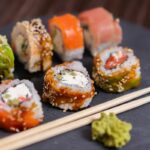

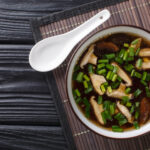

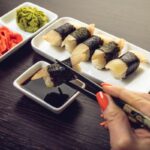
![How Many Types Of Sushi Are There? [Definitive Guide] How Many Types Of Sushi Are There? [Definitive Guide]](https://justaboutjapan.com/wp-content/uploads/2023/05/How-Many-Types-Of-Sushi-Are-There-Definitive-Guide-150x150.jpg)
